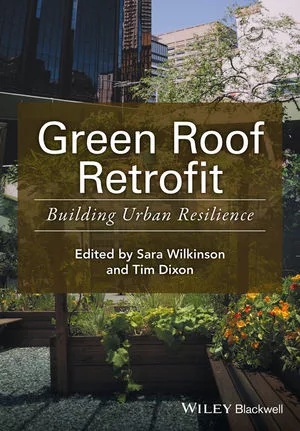Understanding Cool Roof Technologies

With all the focus on green building these days, the market is heating up with interest in cool roof technology. A cool roof is a roof that reflects more sunlight and absorbs less heat than a standard roof, lowering roof temperature and releasing less heat into the environment.
What Constitutes a Cool Roof?
Cool roof requirements vary by region but generally are based on solar reflectance and thermal emittance values which, collectively, create the metric for the solar reflectance index (SRI). Most regional requirements will have minimum values listed.
Many regional and “green” rating councils utilize three-year aging values for the previously mentioned parameters, but others will accept initial values if three-year aged data is not available. It is important to verify local cool roof requirements before selecting the best roofing system.
Solar Reflective Index
Solar reflective index is a calculation based on solar reflectance and thermal emittance in conjunction with ambient air temperature, sky temperature and wind factors.
Most SRI calculators utilize “standard solar and ambient conditions” as defined per ASTM E 1980. The solar reflective index is reported as a value from 0 to 130 ranging from least reflective at 0 to most reflective at 130. (Downloadable SRI calculators are readily available online from various institutions, such as the Lawrence Berkeley National Laboratory’s website.)
Cool Roof Technologies Are Not the Same
There are multiple options for creating a cool roof. Some of the more common types include modified bitumen roofs with reflective granules, reflective coatings, and thermoplastic membranes. The manufacturing and installation processes are different, as are the life expectancies and maintenance requirements. Consider the various ways the most common cool roof technologies differ:
Does Color Matter?
Yes, just like light-colored clothes are more comfortable to wear in hotter climates, a light-colored roof performs better than a black roof at cooling the building.
Light colors are known to be very good solar reflectors and absorb less heat than darker colors. For example, the same roof in black that reaches temperatures of 150°F or more in the sun will be roughly 50° cooler in white. That’s according to the Department of Energy’s website (coolrooftoolkit.org). This is the result of darker roofs absorbing greater than 90% of the incoming solar energy. Dark roofs, in general, usually have an SRI less than 20, whereas a clean white roof could have an SRI of around 70-80.
Cool roofs not only reflect visible light but also UV and infrared light. Look for materials that are light-colored throughout and have good solar reflective index values.
Why are Cool Roofs Adopted in more Communities?
Building professionals and municipalities are recognizing the environmental benefits of green buildings. Cool roofs represent one of many innovations and recent market introductions that
are part of the green building industry.
Cool roof benefits extend past the building to positively impact the entire community, especially when multiple buildings within close proximity of each other have cool roofs. This is because they can collectively reduce local air temperature. Hot dark roofs warm the air flowing over the roof and contribute to global warming by radiating heat into the atmosphere, a phenomenon
often referred to as the urban heat island effect (according to energy.ca.gov/2012publications).
Installing a cool roof instead of a traditional roof reduces the amount of heat entering the building, as well as the heat transferred to the outside air, benefiting not only our buildings and our cities, but also our planet.
Consider all the ways a cool roof can benefit the environment:
- Cooler outside air which reduces the urban heat island effect
- Fewer power plant emissions due to reduced air conditioning demand which decreases emissions of greenhouse gases and other air pollutants at power plants that burn fossil fuels
- Better air quality because of decreased urban air temperatures that slow the formation of ground level ozone
- Slowed climate change as cool roofs decrease heat absorbed at the Earth’s surface
- Reduced electrical grid strain to decrease the risk of power outages
While the benefits of cool roofs are more significant in hotter climates, their advantages can also extend into northern regions. New York City, for example, is just one of a larger group of cooler climate municipalities that has recognized the collective benefit of cool roofs and is requiring cool roofs for various commercial and industrial buildings.
In some areas where cool roofs are not yet required, they may be encouraged through the use of rebates and incentives to building owners. As a result, architects, building owners and facility managers in these regions often specify cool roofs to comply with changing regulations and to qualify for valuable credits, such as LEED and Energy Star.
what to look for when selecting a cool roof technology
When working to meet local environmental mandates, the priority is to choose a cool roof that meets regional and/or “green” rating council requirements. As a general guideline, if a low-slope roofing system meets California Title 24 requirements, it will also meet the LEED and Energy Star Rating systems, especially for asphalt-based roof systems.
Once a technology meets LEED and other energy rating requirements, the next consideration is how burdensome it is to replace an existing roof (in maintenance and renovation situations) or install a new roof with that option. Maintenance requirements should also be considered.
A roof is a major investment with a long-term commitment. Some questions to consider:
- How will it perform over the life of the roof?
- Will it weather well?
- Can it resist mold and discoloration?
- Will it stand up to intermittent maintenance traffic without cracking, tearing or puncturing?
- If it is damaged in some way, how easy is it to repair?
- Is the initial installation process for both new roofs and renovations fast and easy?
- Are the installers familiar with the installation process or will they require special training and tools?
- Does it provide flexibility during installation even in extreme temperatures?
The specific installation method can significantly impact overall labor costs, so installation is a key factor when comparing life cycle costs and difficulty of conversion.
What Are The Benefits of Modified Bitumen Roofing Sheets with Cool Roof Granules?
Modified bitumen roofs can easily become cool roofs with the addition of cool roof granules during the manufacturing process. They are installed using the same process and tools as traditional modified bitumen roofs. The difference is in the surface which is covered with innovative granules. There is no need for coating which makes for a simple installation.
Additionally, the granules are firmly bonded for long-term, reliable performance. The result is a highly reflective surface that’s easy to maintain and stands up to weathering and intermittent maintenance traffic.
To learn more about cool roof options, visit coolroofgranules.com, usgbc.org, coolroofkit.org or energy.gov/energysaver/energy-efficient-home-design/cool-roofs. To learn more about heat island effect, visit heatisland.lbl.gov.
Looking for a reprint of this article?
From high-res PDFs to custom plaques, order your copy today!






